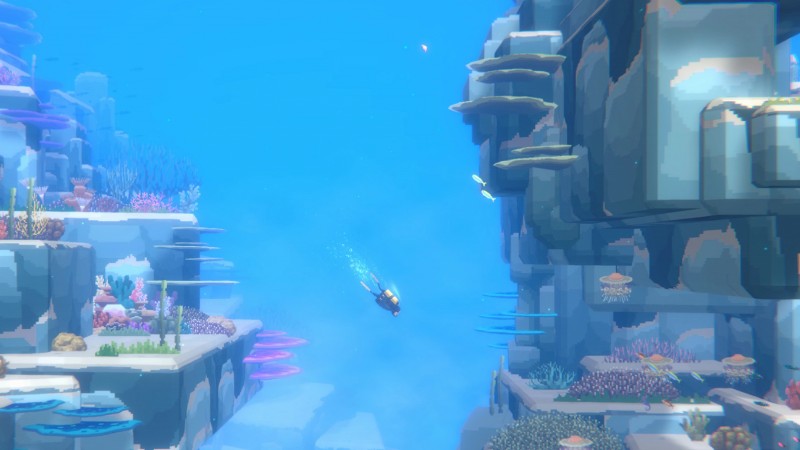In today’s fast-paced world, where demands on our time seem endless, mastering the art of keeping track of…
McAfee unveils AI-powered deepfake audio detection
McAfee has revealed a pioneering AI-powered deepfake audio detection technology, Project Mockingbird, during CES 2024. This proprietary technology aims to defend consumers against the rising menace of cybercriminals employing fabricated, AI-generated audio for scams, cyberbullying, and manipulation of public figures’ images. Generative AI tools have enabled…
Stripes in a flowing liquid crystal suggest a route to “chiral” fluids
Hold your hands out in front of you, and no matter how you rotate them, it’s impossible to superimpose one over the other. Our hands are a perfect example of chirality — a geometric configuration by which an object cannot be superimposed onto its mirror image.
Chirality is everywhere in nature, from our hands to the arrangement of our internal organs to the spiral structure of DNA. Chiral molecules and materials have been the key to many drug therapies, optical devices, and functional metamaterials. Scientists have until now assumed that chirality begets chirality — that is, chiral structures emerge from chiral forces and building blocks. But that assumption may need some retuning.
MIT engineers recently discovered that chirality can also emerge in an entirely nonchiral material, and through nonchiral means. In a study appearing today in Nature Communications, the team reports observing chirality in a liquid crystal — a material that flows like a liquid and has non ordered, crystal-like microstructure like a solid. They found that when the fluid flows slowly, its normally nonchiral microstructures spontaneously assemble into large, twisted, chiral structures. The effect is as if a conveyor belt of crayons, all symmetrically aligned, were to suddenly rearrange into large, spiral patterns once the belt reaches a certain speed.

Credit: Courtesy of the researchers
The geometric transformation is unexpected, given that the liquid crystal is naturally nonchiral, or “achiral.” The team’s study thus opens a new path to generating chiral structures. The researchers envision that the structures, once formed, could serve as spiral scaffolds in which to assemble intricate molecular structures. The chiral liquid crystals could also be used as optical sensors, as their structural transformation would change the way they interact with light.
“This is exciting, because this gives us an easy way to structure these kinds of fluids,” says study co-author Irmgard Bischofberger, associate professor of mechanical engineering at MIT. “And from a fundamental level, this is a new way in which chirality can emerge.”
The study’s co-authors include lead author Qing Zhang PhD ’22, Weiqiang Wang and Rui Zhang of Hong Kong University of Science and Technology, and Shuang Zhou of the University of Massachusetts at Amherst.
Striking stripes
A liquid crystal is a phase of matter that embodies properties of both a liquid and a solid. Such in-between materials flow like liquid, and are molecularly structured like solids. Liquid crystals are used as the main element in pixels that make up LCD displays, as the symmetric alignment of their molecules can be uniformly switched with voltage to collectively create high-resolution images.
Bischofberger’s group at MIT studies how fluids and soft materials spontaneously form patterns in nature and in the lab. The team seeks to understand the mechanics underlying fluid transformations, which could be used to create new, reconfigurable materials.
In their new study, the researchers focused on a special type of nematic liquid crystal — a water-based fluid that contains microscopic, rod-like molecular structures. The rods normally align in the same direction throughout the fluid. Zhang was initially curious how the fluid would behave under various flow conditions.
“I tried this experiment for the first time at home, in 2020,” Zhang recalls. “I had samples of the fluid, and a small microscope, and one day I just set it to a low flow. When I came back, I saw this really striking pattern.”
She and her colleagues repeated her initial experiments in the lab. They fabricated a microfluidic channel out of two glass slides, separated by a very thin space, and connected to a main reservoir. The team slowly pumped samples of the liquid crystal through the reservoir and into the space between the plates, then took microscopy images of fluid as it flowed through.
Like Zhang’s initial experiments, the team observed an unexpected transformation: The normally uniform fluid began to form tiger-like stripes as it slowly moved through the channel.
“It was surprising that it formed any structure, but even more surprising once we actually knew what type of structure it formed,” Bischofberger says. “That’s where chirality comes in.”
Twist and flow
The team discovered that the fluid’s stripes were unexpectedly chiral, by using various optical and modeling techniques to effectively retrace the fluid’s flow. They observed that, when unmoving, the fluid’s microscopic rods are normally aligned in near-perfect formation. When the fluid is pumped through the channel quickly, the rods are in complete disarray. But at a slower, in-between flow, the structures start to wiggle, then progressively twist like tiny propellers, each one turning slightly more than the next.
If the fluid continues its slow flow, the twisting crystals assemble into large spiral structures that appear as stripes under the microscope.
“There’s this magic region, where if you just gently make them flow, they form these large spiral structures,” Zhang says.
The researchers modeled the fluid’s dynamics and found that the large spiral patterns emerged when the fluid arrived at a balance between two forces: viscosity and elasticity. Viscosity describes how easily a material flows, while elasticity is essentially how likely a material is to deform (for instance, how easily the fluid’s rods wiggle and twist).
“When these two forces are about the same, that’s when we see these spiral structures,” Bischofberger explains. “It’s kind of amazing that individual structures, on the order of nanometers, can assemble into much larger, millimeter-scale structures that are very ordered, just by pushing them a little bit out of equilibrium.”
The team realized that the twisted assemblages have a chiral geometry: If a mirror image was made of one spiral, it would not be possible to superimpose it over the original, no matter how the spirals were rearranged. The fact that the chiral spirals emerged from a nonchiral material, and through nonchiral means, is a first and points to a relatively simple way to engineer structured fluids.
“The results are indeed surprising and intriguing,” says Giuliano Zanchetta, associate professor at the University of Milan, who was not involved with the study. “It would be interesting to explore the boundaries of this phenomenon. I would see the reported chiral patterns as a promising way to periodically modulate optical properties at the microscale.”
“We now have some knobs to tune this structure,” Bischofberger says. “This might give us a new optical sensor that interacts with light in certain ways. It could also be used as scaffolds to grow and transport molecules for drug delivery. We’re excited to explore this whole new phase space.”
This research was supported, in part, by the U.S. National Science Foundation.
Sappers Had to Collect Kinzhal’s Warhead from Ukraine’s Capital – Technology Org
The Kh-47M2 Kinzhal is one of the newer ballistic missiles in the Russian arsenal. It entered service in…
North Korea Supplies Missiles to Russia for Strikes Against Ukraine – Technology Org
The White House has revealed that Russia utilized short-range ballistic missiles (SRBMs) acquired from North Korea in recent…
Researchers 3D Print Components for a Portable Mass Spectrometer – Technology Org
Mass spectrometers, devices that identify chemical substances, are widely used in applications like crime scene analysis, toxicology testing,…
AI Agents Help Explain Other AI Systems – Technology Org
MIT researchers introduce a method that uses artificial intelligence to automate the explanation of complex neural networks. Explaining…
Ukrainian Drones Destroyed Two Russian Air Defence Systems in Russia – Technology Org
The Russian air defense system Pantsir-S1 is a very expensive and a very important tool for the Russian…
Dave The Diver Surpasses 3 Million Sales

Dave the Diver has surpassed 3 million units sold, developer Mintrocket has revealed. The studio announced this achievement on X today, alongside some new art from the game to celebrate the milestone. Selling 3 million units is no small feat, especially considering Dave the Diver is Mintrocket’s first game.
In Dave the Diver, players control Dave as he dives during the day to find treasure, fish, complete quests, and more. At night, Dave runs a sushi restaurant, and the game mixes its adventure gameplay with its simulation gameplay really well – read more about that in Game Informer’s Dave the Diver review.
Dave the Diver received great word-of-mouth at the time of its PC release in June, bolstered further by a Switch release later in October. It also crossed over with indie hit Dredge last month. Shortly before that crossover, Dave the Diver picked up a nomination for Best Independent Game at The Game Awards 2023.
Have you played Dave the Diver? Let us know what you think of it in the comments below!
Assassin’s Creed Valhalla, Resident Evil 2, And More Join Xbox Game Pass This Month

It’s a new year, and Xbox is kicking off January with its first batch of new Game Pass titles for 2024. This month is headlined by the additions of Assassin’s Creed Valhalla and the remake of Resident Evil 2. As always, when new games enter a few must leave, and one big departure is Grand Theft Auto V in just a couple of days. Check out the full list below and check out the links to our reviews for applicable titles.
What’s Coming
Hell Let Loose (Xbox Series X/S, PC,Cloud) – January 4
Assassin’s Creed Valhalla (Console, PC, Cloud) – January 9 | Our Review
Figment (Console, PC, Cloud) – January 9
Super Mega Baseball 4 via EA Play (Console, PC, Cloud) – January 11 | Our Review
We Happy Few (Console, PC, Cloud) – January 11 | Our Review
Resident Evil 2 (Console, PC, Cloud) – January 16 | Our Review
Those Who Remain (Console, PC, Cloud) – January 16
What’s Leaving
Grand Theft Auto V (Console, Cloud) – January 5 | Our Review
Garden Story (Console, PC, Cloud) – January 15
MotoGP 22 (Console, PC, Cloud) – January 15
Persona 3 Portable (Console, PC, Cloud) – January 15 | Our Review
Persona 4 Golden (Console, PC, Cloud) – January 15 | Our Review
